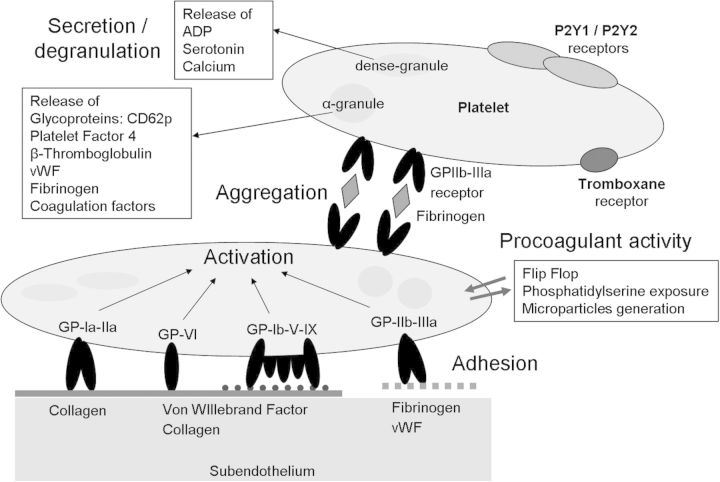Fig. 1.
The role of PLT in primary haemostasis. Vascular wall injury results in the exposure of the subendothelial matrix including collagen. PLT adhesion is initially mediated by vWF, which serves as a bridge between collagen and the GPIb/IX/V complex on the PLT. Collagen binding to GPVI results in PLT activation. The cytoplasma of PLTs contain αlpha and dense granules. During PLT activation, the granules release their content, such as platelet factor 4, glycoproteins (GPs), ADP and serotonin. GP1b and GPIIb/IIIa serve as receptors and ligand-binding sites for vWF and fibrinogen. Both are important for firm PLT adhesion and aggregation via the activated GPIIb/IIIa receptor. PLT activation also results in a shape change of the PLTs through the formation of pseudopodia. The shape change and exposure of phosphatidyl serine and p-selectin (CD62p) on the PLT membrane result in a procoagulant PLT surface. Procoagulant activity results in the generation of thrombin and fibrin formation, and stabilization of the hemostatic plug.

